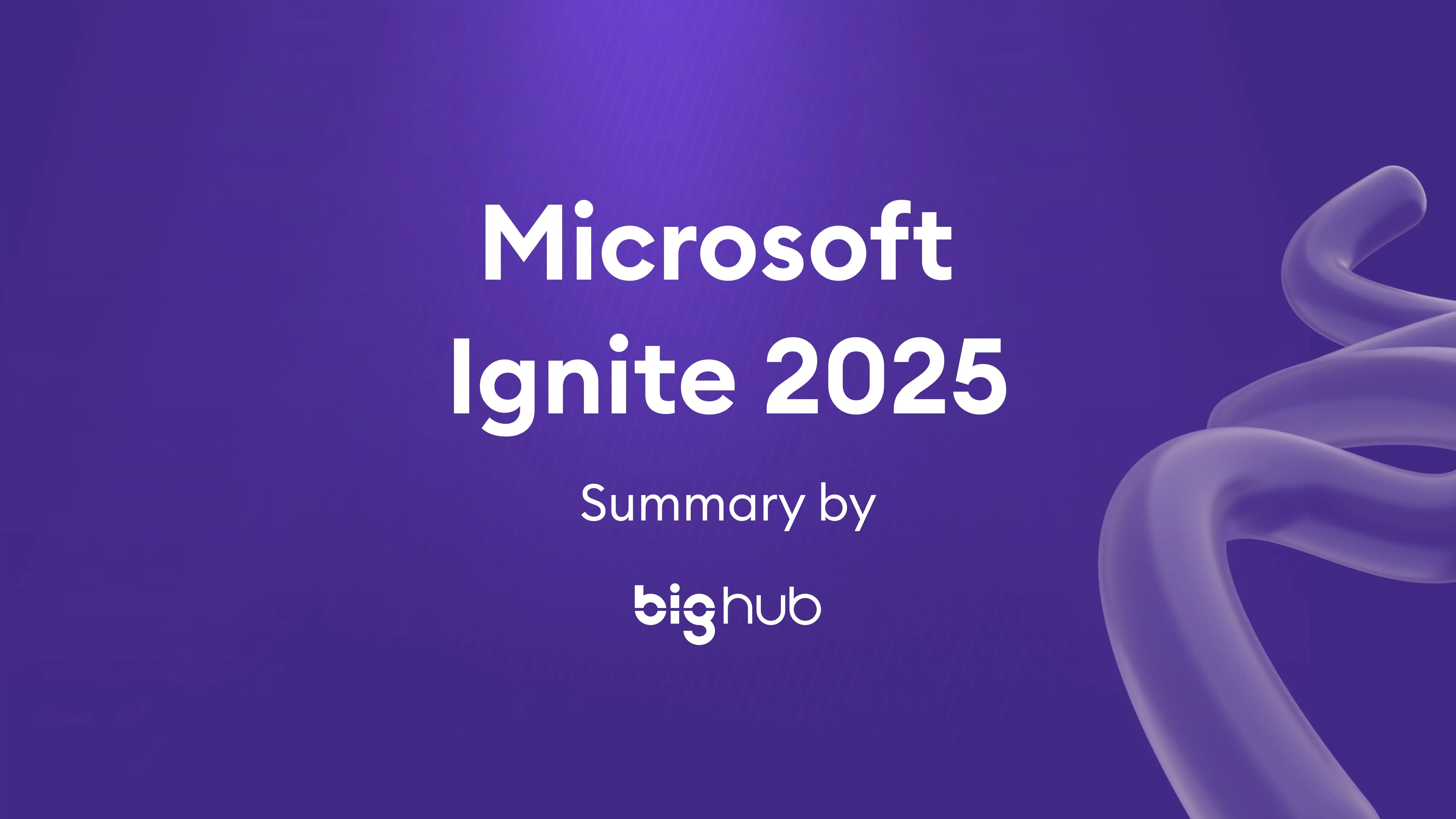1. AI agents move centre stage
Microsoft’s headline reveal, Agent 365, positions AI agents as the new operational layer of the digital workplace. It provides a central hub to register, monitor, secure, and coordinate agents across the organisation.
At the same time, Microsoft 365 Copilot introduced dedicated Word, Excel, and PowerPoint agents, capable of autonomously generating, restructuring, and analysing content based on business context.

Why this matters
Enterprises are shifting from “asking AI questions” to “assigning AI work”. Agent-based architectures will gradually replace many single-purpose assistants.
What organisations can do
- Identify workflows suitable for autonomous agents
- Standardise agent behaviour and permissions
- Start pilot deployments inside Microsoft 365 ecosystems
2. Integration and orchestration become non-negotiable
Microsoft emphasised interoperability through the Model Context Protocol (MCP). Agents across Teams, Microsoft 365, and third-party apps can now share context and execute coordinated multi-step workflows.
Why this matters
Real automation requires more than standalone copilots — it requires orchestration between tools, data sources, and departments.
What organisations can do
- Map cross-app workflows
- Connect productivity, CRM/ERP and operational platforms
- Design agent ecosystems rather than isolated assistants
3. Governance and security move into the spotlight
As agents gain autonomy, Microsoft introduced governance capabilities such as:
- visibility into permissions
- behavioural monitoring
- integration with Defender, Entra, and Purview
- centralised policy control
- data-loss prevention
Why this matters
AI at scale must be fully observable and compliant. Governance will become a foundational requirement for all agent deployments.
What organisations can do
- Define who is allowed to create/modify agents
- Establish audit and monitoring standards
- Build guardrails before rolling out automation
Read the official Microsoft article with all security updates & news - Link
4. Windows, Cloud PCs, and the rise of the AI-enabled workspace
Microsoft presented Windows 11 and Windows 365 as key components of the AI-first workplace. Features include:
- AI-enhanced Cloud PCs
- support for shared and frontline devices
- local agent inference on capable hardware
- endpoint-level automation
Why this matters
Distributed teams gain consistent, secure work environments with native AI capabilities.
What organisations can do
- Evaluate Cloud PC scenarios
- Modernise workplace setups for agent-driven workflows
- Explore AI-enabled devices for operational teams
5. AI infrastructure and Azure evolution
Ignite highlighted continued investment in Azure AI capabilities, including:
- improved model hosting and versioning
- hybrid CPU/GPU inference
- faster deployment pipelines
- more cost-efficient fine-tuning
- enhanced governance for AI training data
Full report here - Link
Why this matters
Scalable data pipelines and model infrastructure remain essential foundations for any agent-driven environment.
What organisations can do
- Update data architecture for AI-readiness
- Implement vector indexing and retrieval pipelines
- Optimise model hosting costs
6. Copilot Studio and plug-in ecosystem expand rapidly
Copilot Studio received major updates, transforming it into a central automation and integration hub. New capabilities include:
- custom agent creation with visual logic
- no-code multi-step workflows
- plug-ins for internal APIs and line-of-business systems
- improved grounding using enterprise data
- expanded connectors for CRM/ERP/event platforms
Why this matters
Organisations can build specialised copilots and agents — connected to their internal systems and business logic.
What organisations can do
- Develop domain-specific copilots
- Use connectors to integrate existing systems
- Leverage visual logic for quick experiments
7. Fabric + Azure AI integration
Microsoft Fabric now provides deeper AI readiness features:
- tight integration with Azure AI Studio
- automated pipelines for AI data preparation
- vector indexing and RAG capabilities inside OneLake
- enhanced lineage and governance
- performance boosts for large-scale analytics
Why this matters
AI agents depend on clean, governed, real-time data. Microsoft states that Fabric now enables building unified data + AI environments more efficiently.
What organisations can do
- Consolidate disparate data pipelines into Fabric
- Implement vector search for internal knowledge retrieval
- Build governed AI datasets with lineage tracking
What this means for companies
Across all announcements, one trend is consistent: AI is becoming an operational layer—not an add-on.
For organisations in finance, energy, logistics, retail, or event management, this brings clear implications:
- It’s time to move from experimentation to real deployment.
- Automated agents will replace many single-purpose copilots.
- Governance frameworks must be in place before scaling.
- Integration across apps, data sources, and workflows is essential.
- AI will increasingly live inside productivity tools employees already use.
- The competitive advantage will come from how well agents connect to business processes—not from which model is used.
BigHub is well-positioned to guide you with for this transition—through personalized strategy, architecture, implementation, and optimisation.
How enterprises should prepare for 2025–2026
Here are the next steps organisations should consider:
1. Map high-value workflows for agent automation
Identify repetitive, cross-team workflows where autonomous task execution delivers value.
2. Design your agent governance framework
Define roles, access boundaries, audit controls, and operational monitoring.
3. Prepare your data infrastructure
Ensure clean, accessible, governed data that agents can safely use.
4. Integrate your productivity tools
Leverage Teams, Microsoft 365, and MCP-compatible apps to reduce friction.
5. Start with a controlled pilot
Choose one business unit or workflow to test agent deployment under monitoring.
6. Plan for organisation-wide rollout
Once guardrails are validated, scale agents into more complex processes.
Conclusion
Microsoft Ignite 2025 confirmed that the enterprise AI landscape is maturing. Agents, governance, and integration (not just generative content) will define the next two years of innovation. For organisations ready to invest strategically, now is the moment to build the foundations.
If your organisation is exploring how to adopt or scale AI agents responsibly, BigHub can guide you through the strategy, architecture and implementation needed to make these capabilities work in practice.



.avif)